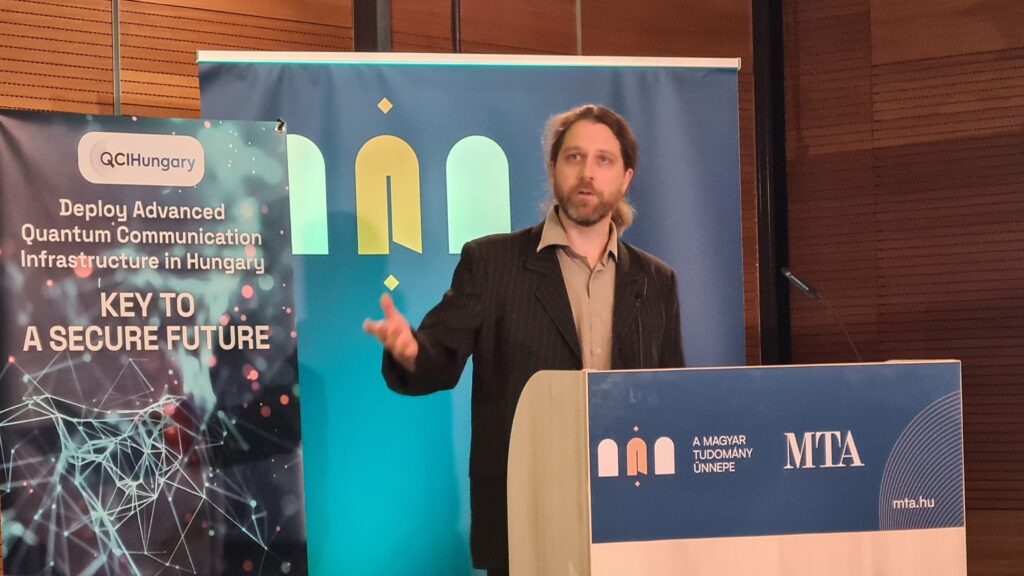On 12 November, as an official event of the Hungarian Science Day, our project provided an insight into quantum communication for the audience visiting the MTA’s Human Sciences Research House (HTC) and for those following the live broadcast. The event was chaired by Dr. László Bacsárdi, Associate Professor of the Department of Network Systems and Services at the BME.

In his welcome speech, Dr. Sándor Imre, Chairman of the Department of Engineering Sciences, MTA, called the event a milestone and welcomed the fact that quantum communication infrastructure and research results are finally be made visible to a wider audience.

Our international guest, Dr. Christopher Vaskó, representing ESA (European Space Agency), gave a presentation on the benefits and opportunities of satellite quantum communications and the aims of the SAGA project. Dr. Ádám Gali, Head of the Institute of Solid State Physics and Optics at the HUN-REN Wigner Research Centre for Physics, then presented the need for quantum memory, its physical properties and the challenges involved in its research.


In the subsequent talks, all four partners Representing the QCIHungary consortium presented their activities in the project so far, and highlighted the developments in quantum communications that are important to them.

János Mohácsi, the project coordinator, outlined the challenges of encryption in communications, talked about international quantum communication trends, plans and the main elements of the EuroQCI cooperation. Dr. László Bacsárdi reported on ground and satellite quantum communication activities at BME. Dr. Tamás Kiss, Head of Research at the HUN-REN Wigner Research Centre for Physics, highlighted the importance of the practical part of the research through the examples of Nobel Prize winning physicists, and continued with an international overview of quantum key sharing systems outside Europe. Dr. Péter Ligeti, Associate Professor at the ELTE Institute of Computer Science, mentioned the courses in quantum information theory and quantum cryptography offered within the project, and then highlighted the role of ELTE researchers to develop, design and implement the software for the secure encryption infrastructure within QCIHungary.





The presentations were followed by a panel discussion focusing on the interdisciplinary nature of quantum communications. The participants reviewed the expert network and knowledge accumulated in Hungary in order to successfully develop the discipline. They also attempted to estimate the rate of development of the quantum communication technology until 2030 and beyond.
Recordings of the presentations and the panel are now available at the link below:



